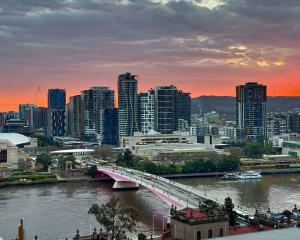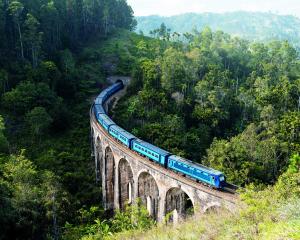
For this predominantly land-based and heat-adverse journalist, Queensland’s Gold Coast — known for its world-famous beaches and surfing fanaticism — was not particularly high on my travel agenda.
Were it not winter, it would be the last place you would find me.
But despite a proclivity for the cold plains and Gothic vistas of my Otago homeland, across the Ditch I was pleasantly surprised by the range of activities at my disposal which involved keeping two feet planted firmly on dry land.
Within a single jam-packed day, I was immersed in Australian Aboriginal culture, had a (literal) taste of nature, introduced myself to the native wildlife and sampled the area’s luxury accommodation and hospitality offerings.

With a helping of sweet potato fries from the nearby Custard Canteen to start the day, a brief stroll over the aforementioned bridge to the other side of the creek brought me to the Jellurgal Aboriginal Cultural Centre — right next to Burleigh Head National Park — for a walkabout tour.
I am introduced to a brief history about the Yugambeh people and the local Kombumerri clan and learn "talle" translates in Yugambeh to "fish", and "jellurgal" means "honeycomb".
My guide points towards a mountain visible on the horizon beyond the bridge known as Wollumbin, meaning "cloud catcher", or Mt Warning, which is the first place in all of Australia to see the sunlight every morning.
On our journey, I sample some bush tucker including lilly pilly. It has the sourness of a green apple, in contract with the native sarsaparilla berries, which are aptly described as having the texture of the dehydrated peas in two-minute noodles.
Later I sit down under a tree on a seaside embankment to be told an Aboriginal dreamtime story, or creation story. I hear of Javreen the giant Aboriginal man and his war club, and the formation of what would become the Gold Coast. Listening to this story under the shade as surfers splash into the ocean and a warm breeze passes over us, I could stay here forever.

For some light retail therapy or a coffee fix, James St is a short walk away.
One of the more recent additions to the area is the Mondrian Gold Coast. With 11 locations around the world including in Los Angeles, Ibiza and Hong Kong, the 24-storey five-star hotel marks the global hospitality chain’s debut, not just in Queensland, but all of Australia. I am told it opened about three weeks before my visit.
It is one half of a two-tower development, the other being a residential complex.
The interior was designed in a coastal palette with natural finishes to resemble an old European building, to give the impression it could have been open for a hundred years, or is run by some old Greek grandfather.
To contrast, its dimly lit corridors are to make guests feel as though they are traversing a cave or some passageway before emerging into their well-lit ocean view room. The hotel also boasts two restaurants and its bio wellness-focused CIEL Spa. It is kitted out with all the bells and whistles, such as a cryo-therapy float tank, red light bed and a healing Himalayan salt room.


A local beekeeper and flower grower, Griffiths began feeding wild rainbow lorikeets the honey from his beehives in a bid to stop them feasting on his gladioli blooms. His morning and afternoon routine of feeding the lorikeets has since been preserved as tradition at the sanctuary, remaining a key attraction to this day. It is open to the public and the feeding is free to watch.
The money the sanctuary does make goes towards funding conservation projects and running its wildlife hospital.
Griffiths’ own miniature steam train also remains at the sanctuary, in addition to two diesel trains which transport visitors around the property.
As per the employee handbook, staff are required to wave and smile at every passing train.
But what about the animals?

The sanctuary also comes with its own koala nursery. The endangered marsupials are on track to be extinct in this part of Australia by 2050, mainly due to chlamydial disease, and the sanctuary is actively involved in efforts to protect them.
A five-year vaccine research trial at the wildlife hospital is about to wrap up, which also tends to about 450 injured koalas a year, as the nursery focuses on breeding a strong genetic population.
Other attractions include an indigenous culture show every afternoon and a Zipline course over nine freshwater crocodiles dubbed the "Croc Shock".
It also has a fantastic gift shop — as any good zoo should.
I later returned to the wildlife sanctuary, this time under the cover of darkness, to experience its recently opened multi-sensory light and sound experience, Astra Lumina. The premise is an "enchanted night walk amongst the stars" through 10 distinct stops in the sanctuary. It is about a 1.5km bushland walk and touted as the first of its kind in the southern hemisphere.

At one point, the musical score combined with a ripple of gentle flickering lights made me feel like I was in a Disney movie.
At times mysterious, others magical, Astra Lumina is a fun and uncomplicated little experience you can savour at a snail’s pace, as I did. You can also buy some "Milky Way" hot chocolate to take along on your lunar voyage.
What a great idea — and one space explorers of all ages will enjoy.












